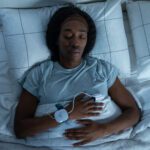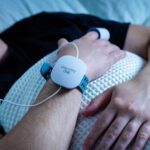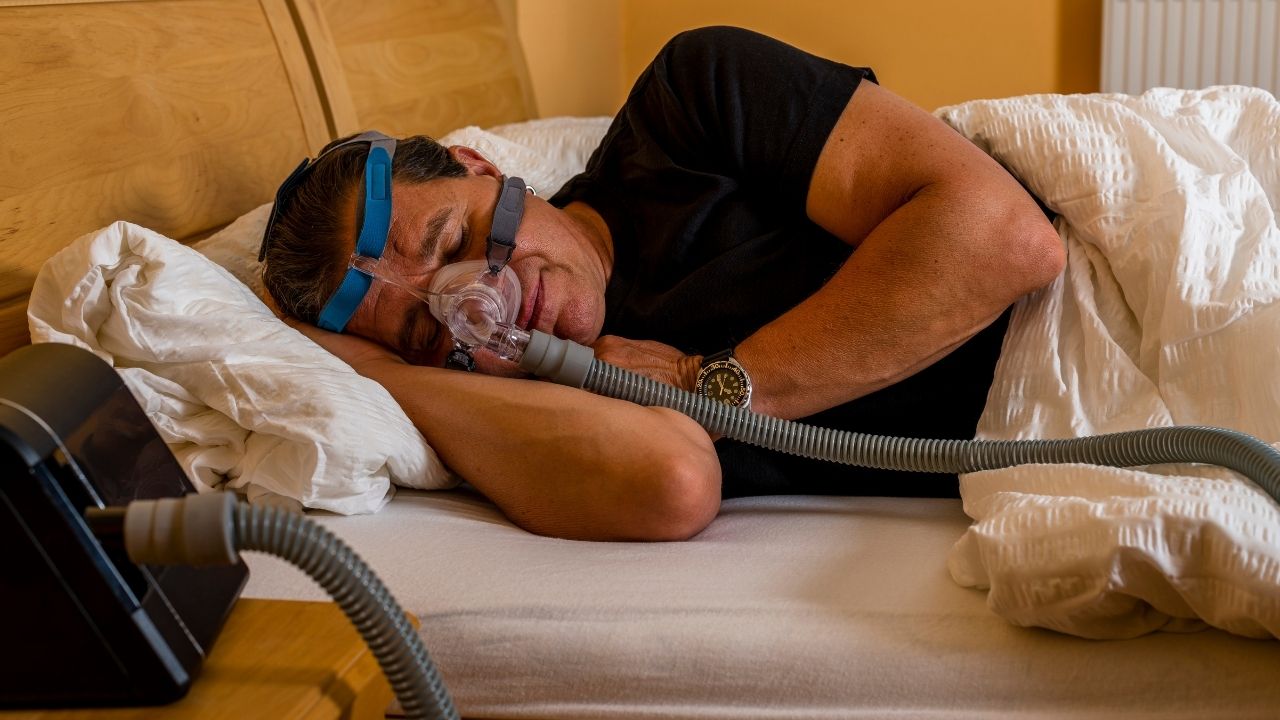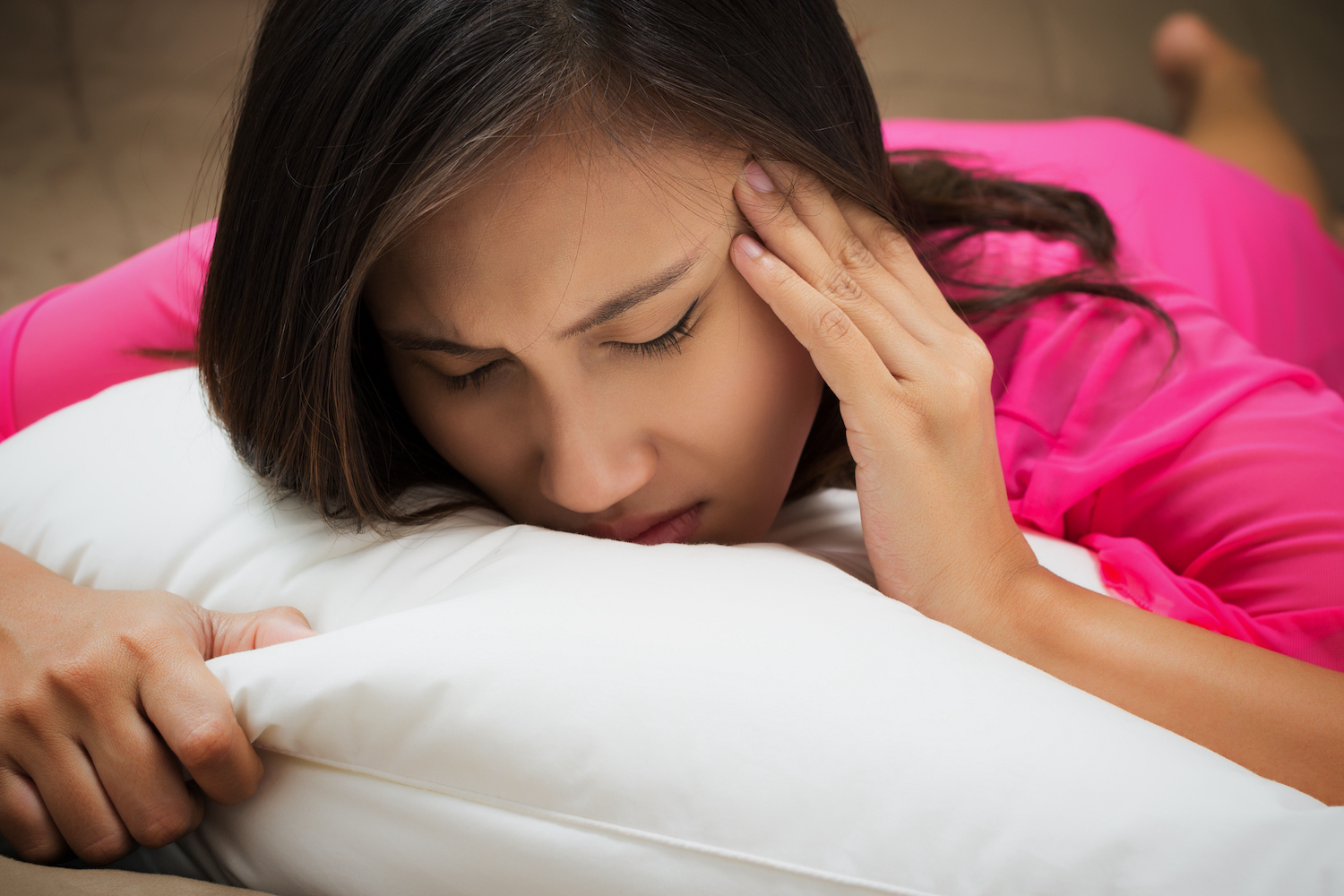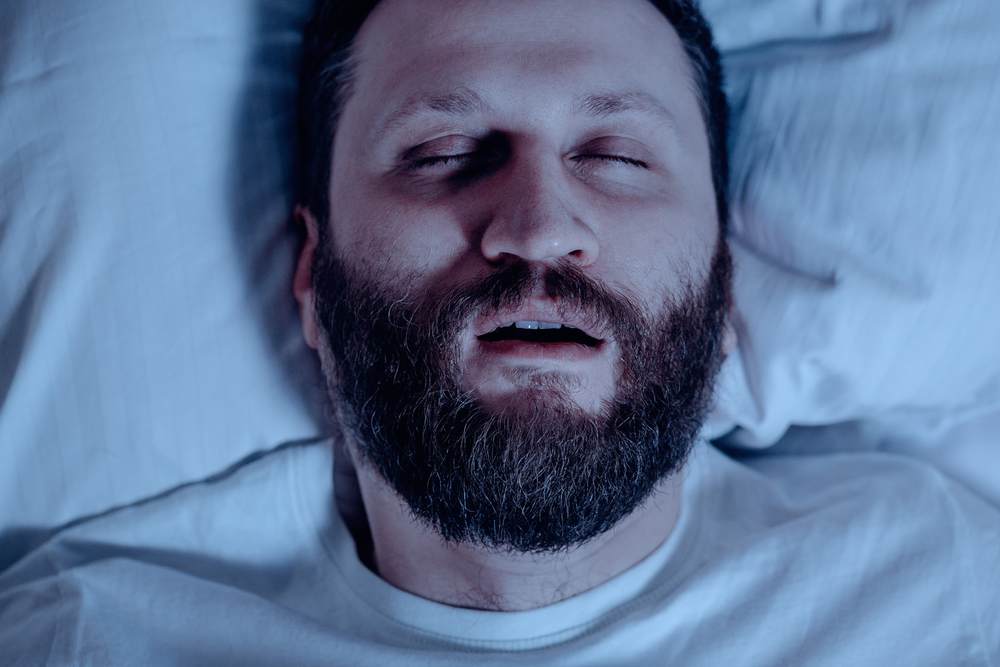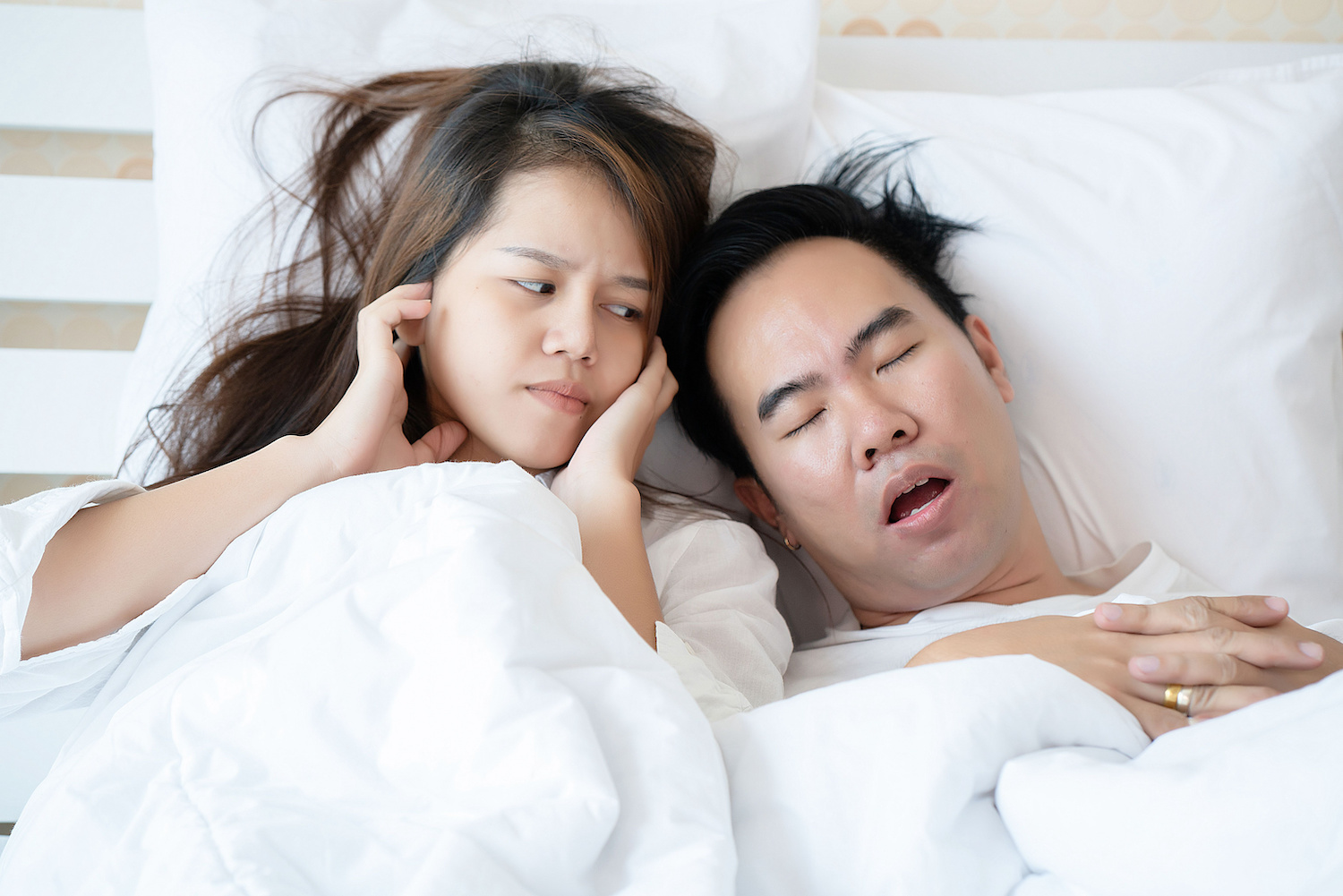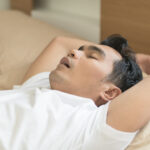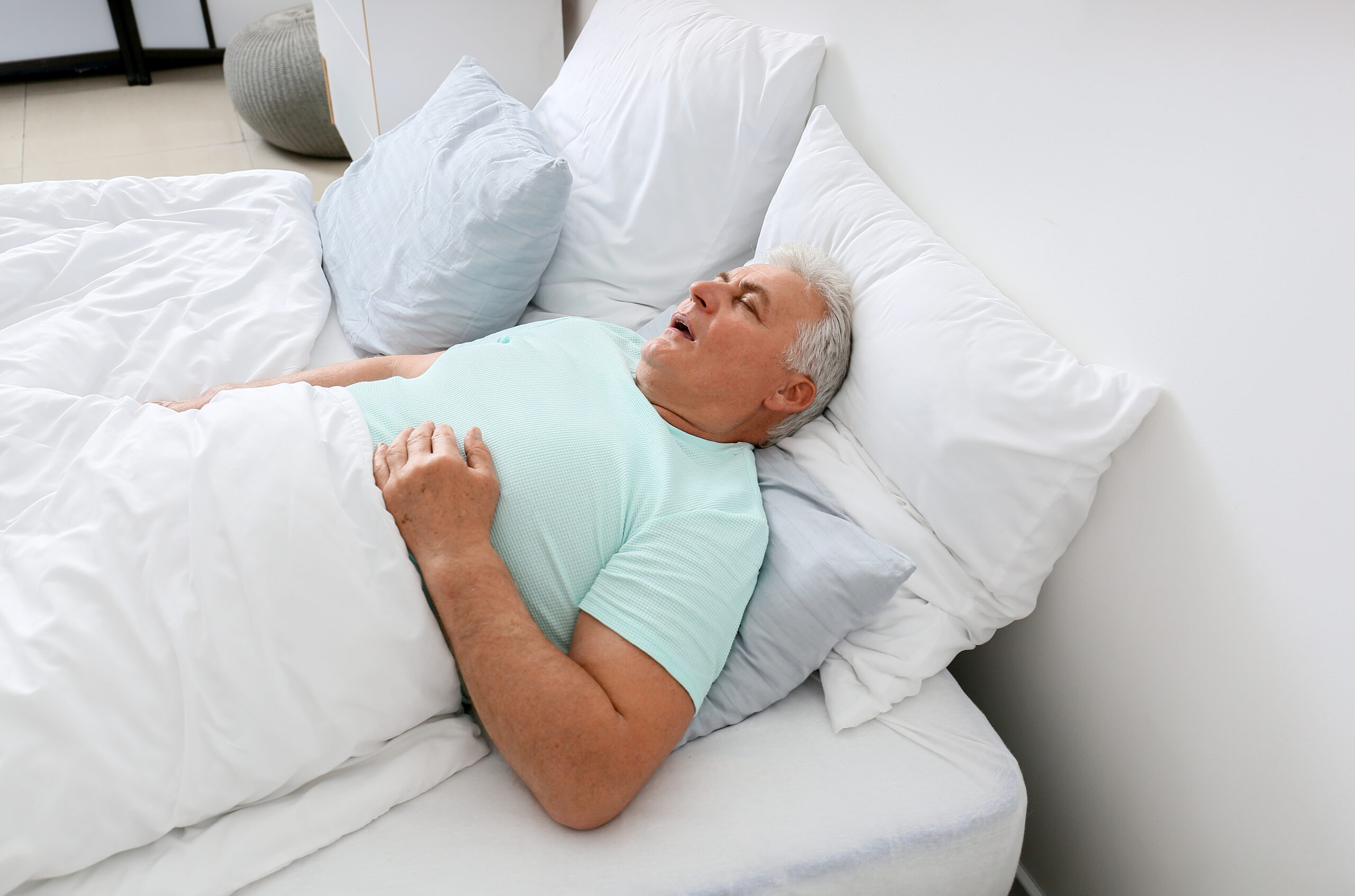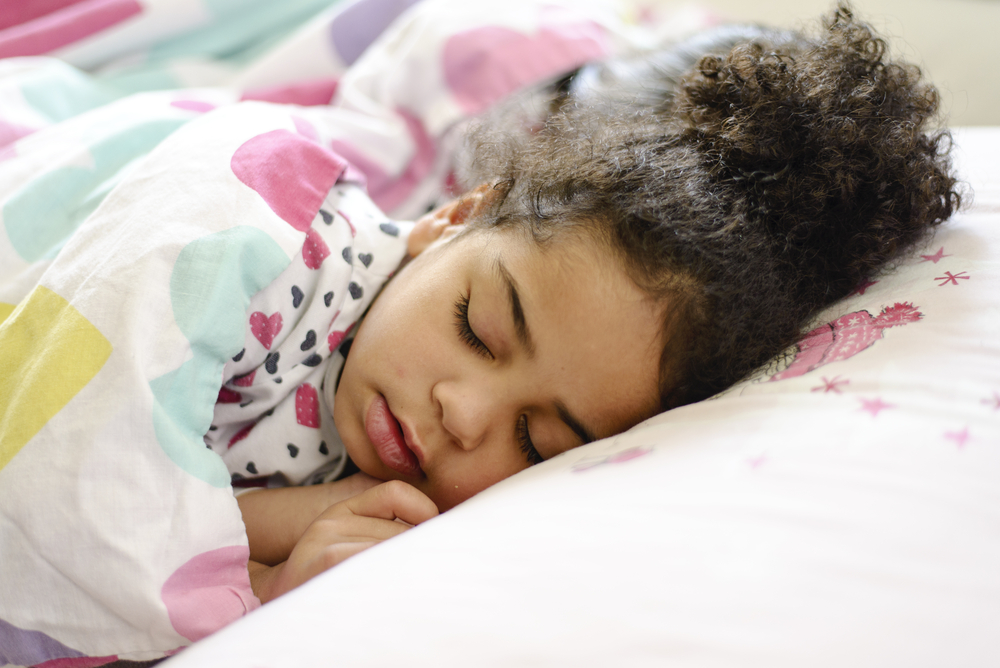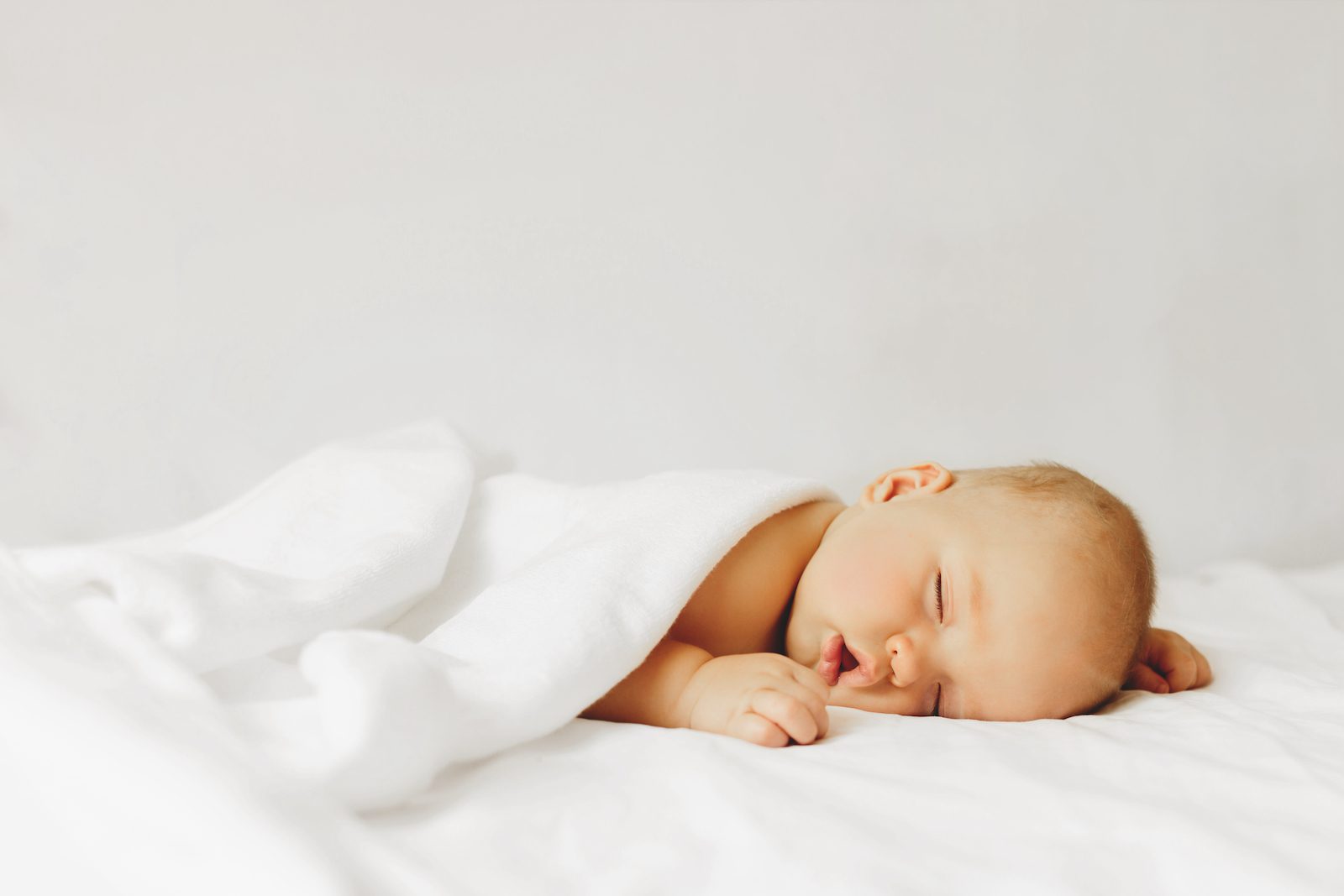Sleep apnea involves frequent disruptions in breathing during sleep, which significantly reduce sleep quality and contribute to a higher risk of health problems like cardiovascular disease.
People with this common sleep disorder often do not realize that their nighttime breathing is abnormal. Knowing more about the types of sleep apnea, as well as its causes, symptoms, and treatment, can allow people concerned about sleep apnea to take a more active role in improving their sleep and health.
Our Recommended At-Home Sleep Apnea Test
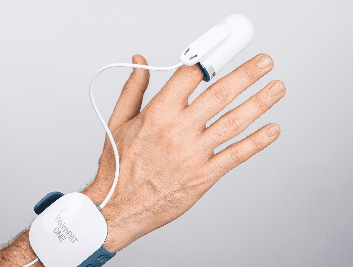
our partner at sleepdoctor.com
Save 54% on your Sleep Test Today
Shop Now“Wish I'd known how easy and affordable getting tested would be. Got my diagnosis fast, and now I'm actually getting decent sleep!”
Dawn G. – Sleep Doctor Customer
Types of Sleep Apnea
There are two main types of sleep apnea. Each involves disrupted breathing during sleep, but there are important differences that affect their diagnosis, symptoms, and treatment.
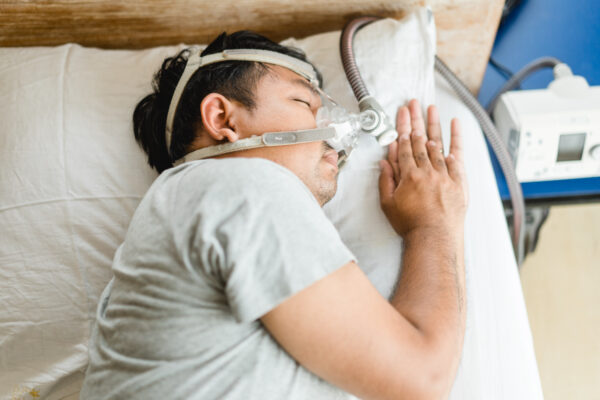
Obstructive Sleep Apnea
Obstructive sleep apnea (OSA) is estimated to affect between 10% and 30% of adults in the United States, making it the most common type of sleep apnea.
In people with OSA, air cannot move freely through the airway during sleep. This happens because the surrounding muscles and tissues slacken, which can constrict or collapse the airway. This can trigger recurrent partial awakenings to restore breathing, fragmenting sleep and making it less refreshing.
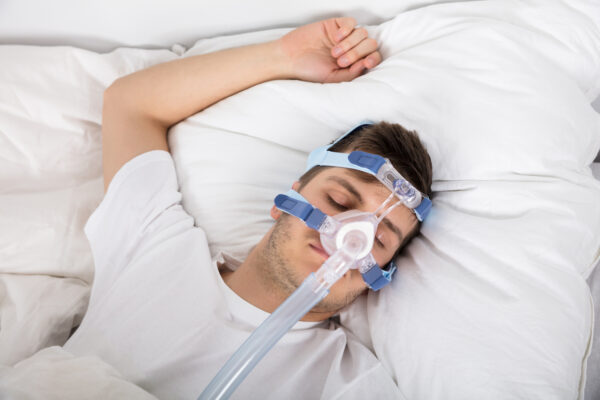
Central Sleep Apnea
Central sleep apnea (CSA) is a less common type of sleep apnea that affects fewer than 1% of people. Individuals with CSA have episodes of stopped, slowed, or shallow breathing during sleep that occur because of a failure in communication between the brain and the muscles responsible for respiration.
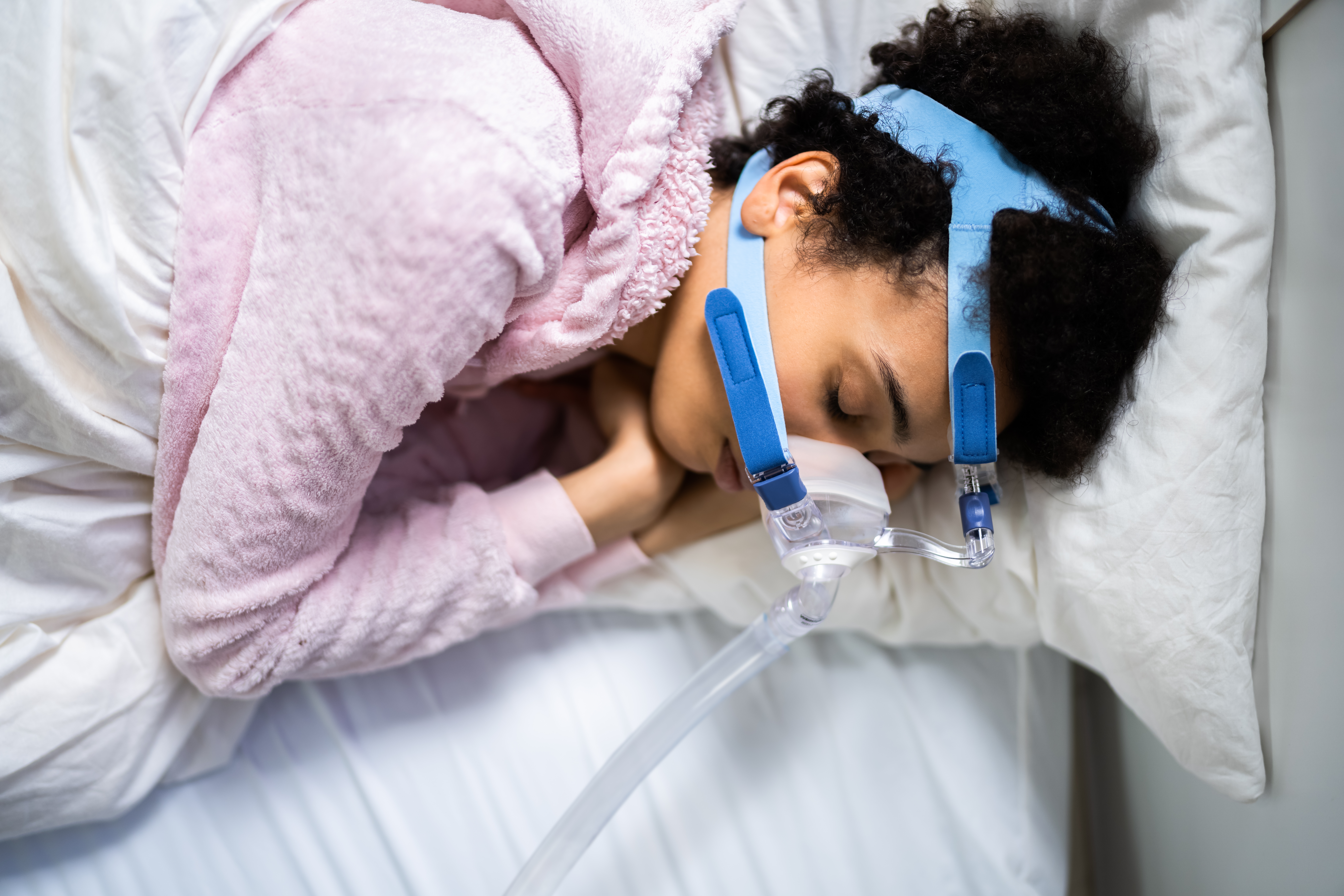
Complex/Mixed Sleep Apnea
When a person with OSA develops symptoms of CSA after starting positive airway pressure (PAP) therapy, this is known as treatment-emergent central sleep apnea. This subtype of central sleep apnea was previously called complex sleep apnea.
While PAP therapy reduces the breathing interruptions associated with obstructions in the airway, treatment-emergent central sleep apnea results in more breathing interruptions related to the communication between the brain and breathing muscles.
Symptoms of Sleep Apnea
Obstructive and central sleep apnea can cause symptoms both during sleep and during the day. People with sleep apnea may not realize they are breathing abnormally during sleep, so nighttime symptoms may be first witnessed by a bed partner or caregiver.
What Are the Symptoms of Obstructive Sleep Apnea?
The most common symptoms of OSA are:
- Excessive sleepiness during the day
- Regular snoring
- Interrupted breathing or gasping sounds during sleep, as heard by a bed partner
- Morning headaches
- Restless sleep
- Trouble staying asleep
- Frequent nighttime urination
- Mood changes during day, such as irritability
- Decreased concentration or attention span
- Night sweats
- Never feeling refreshed upon awakening
What Are the Symptoms of Central Sleep Apnea?
The symptoms most often associated with central sleep apnea include:
- Frequent pauses in breathing, shallow breaths, or other abnormal respiration
- Difficulty staying asleep through the night
- Significant daytime sleepiness
- Shortness of breath at night
- Reduced concentration
- Morning headaches
When to Talk to Your Doctor
If a caregiver or partner observes you breathing abnormally during sleep, it is important to make an appointment to see a doctor.
Many people are not aware of breathing disruptions during sleep. It may be helpful to talk to a doctor if you experience any of these issues:
- Waking up tired despite sleeping seven or more hours
- Falling asleep at inappropriate times, such as while at work or when driving
- Regularly having headaches in the morning
- Awakening from sleep with a feeling that you cannot breathe
- Diminished concentration or ability to focus
- Reliance on caffeine or energy drinks to get through the day
Many people with these symptoms assume that they are being caused by something else, which is part of why sleep apnea is underdiagnosed.
Sleep Apnea Causes
Although abnormal breathing occurs in both obstructive and central sleep apnea, the underlying cause helps distinguish the two conditions.
What Causes Obstructive Sleep Apnea?
Obstructive sleep apnea is caused when muscles and tissues block the upper airway that carries air to and from the lungs.
When muscles in the throat relax during sleep, they can obstruct the airway. If the airway narrows or collapses, breathing may diminish or stop entirely. Without proper respiration, oxygen levels fall, which can force an awakening in order to open the upper airway and take in more air.
These awakenings are often so brief that a person does not notice, but the cycle repeats when they fall back asleep. This recurring process causes shallower, fragmented sleep through the night.
What Causes Central Sleep Apnea?
The cause of central sleep apnea is a lack of proper signals from the medulla, the part of the brain that controls breathing, to the lungs. This may result in repetitive episodes of shallow breathing or pauses in breathing.
Risk Factors for Sleep Apnea
Risk factors can increase a person’s chances of developing a medical problem. Different risk factors affect the likelihood of having either obstructive or central sleep apnea.
What Are the Risk Factors for Obstructive Sleep Apnea?
Researchers who study obstructive sleep apnea have identified several factors that have the clearest relationship to a person’s risk of developing OSA.
- Sex: In general, men or people assigned male at birth are twice as likely to develop OSA as women or people assigned female at birth. The difference in risk between these groups gets smaller later in life.
- Age: Starting in young adulthood, the risk of OSA grows as a person gets older until it levels out sometime after turning 60 years old.
- Excessive weight: People with a higher body-mass index (BMI) have an increased risk of having OSA.
- Specific anatomic features: Having a tongue that is larger or a lower jaw that is shorter can make it more likely for a person’s airway to become blocked during sleep.
Other factors that are also believed to increase a person’s risk of OSA include:
- Sleeping on the back
- Smoking cigarettes
- Having frequent nasal congestion
- Having a family history of OSA
- Using alcohol, sedative drugs, or drugs that affect muscle tone or sleep
- Having certain health problems, including disorders that affect thyroid hormones or growth hormone
What Are the Risk Factors for Central Sleep Apnea?
Several factors influence a person’s risk of developing central sleep apnea.
- Age: CSA is generally more common in people who are older than 65 years old.
- Sex: Men or people assigned male at birth have a heightened risk of CSA.
- Altitude: As a consequence of the reduced amount of oxygen at high altitudes, CSA is more likely in people who spend time at high elevations.
- Opioid medications: Long-term use of certain drugs, including medications used to treat opioid abuse, has been linked to a greater likelihood of having CSA.
In many cases, CSA is a result of an underlying medical issue. Examples of health problems that can cause CSA include:
- Stroke
- An injury or infection that causes damage to the brain stem
- Heart failure
- Kidney failure
Diagnosing Sleep Apnea
To diagnose sleep apnea, a doctor typically starts by finding out about a person’s health history and symptoms. This may include asking a bed partner or family member whether they have observed any signs of sleep apnea. An initial evaluation also involves a physical exam.
While this initial process can reveal possible sleep apnea, more specific testing is required to make a diagnosis. The primary test used to diagnose sleep apnea is a sleep study.
A sleep study involves spending a night in a sleep clinic. During the night, testing with a technique called polysomnography uses sensors to closely measure things like sleep stages, breathing, muscle movement, and oxygen levels.
Data from a sleep study allows the doctor to observe the frequency and type of breathing disruptions that occur during sleep, which enables them to determine if a person has obstructive or central sleep apnea. The results of the sleep study also help the doctor assess the severity of sleep apnea.
While the most reliable testing for OSA includes one or two nights spent in a sleep lab, some people are eligible for at-home sleep apnea testing. At-home testing does not provide as much data as polysomnography. The results must be interpreted by a doctor, and in-clinic polysomnography may still be necessary as a follow-up test.
Treatments for Sleep Apnea
Sleep apnea treatments are focused on eliminating breathing disruptions and other symptoms caused by sleep apnea. Since obstructive and central sleep apnea have distinct causes, they generally require different treatment strategies.
What Are the Treatments for Obstructive Sleep Apnea?
Treatments for obstructive sleep apnea may include positive airway pressure (PAP) therapy, lifestyle changes, wearing a special mouthpiece, or surgery.
PAP therapy works by pumping pressurized air through the mouth and/or nose to keep the airway from collapsing while a person is sleeping. The air is generated by a small bedside device and is then sent through a hose and a mask worn on the face.
PAP therapy requires a prescription, and a continuous positive airway pressure (CPAP) device may be proposed as the first step in treatment for OSA. Other variations of PAP therapy may be available depending on a person’s specific situation.
Lifestyle changes are often included in a treatment plan for OSA. These are intended to eliminate factors that negatively affect breathing during sleep. Examples include:
- Losing excess weight
- Sleeping on the side instead of the back
- Quitting smoking
- Limiting or eliminating alcohol intake
- Exercising frequently
Another type of OSA treatment, called oral appliance therapy, involves wearing a special mouthpiece during sleep. The mouthpiece is designed to prevent the jaw or tongue from moving into a position that blocks the airway. This type of treatment may not resolve breathing disruptions and may only be an option for people with OSA that is not severe.
Less often, surgery can be considered to treat OSA. Surgery can help clear the airway by removing surrounding tissue or advancing the jaws forward to widen the airway. There is also the option to implant a nerve stimulation device designed to help regulate breathing.
Health care providers work closely with patients to determine the most appropriate components of a treatment plan for each individual, so questions about the pros and cons of each treatment option should be reviewed with a doctor or sleep specialist.
What Are the Treatments for Central Sleep Apnea?
Treatment for central sleep apnea is based on the underlying medical problem that is causing the condition. Treatments to improve breathing may be necessary if breathing problems during sleep are significant or continue even after trying to resolve the underlying cause.
Positive airway pressure (PAP) therapy may be an option to encourage more consistent breathing and maintain oxygen levels while a person with CSA is asleep. Typically, a more advanced PAP therapy like adaptive servo-ventilation (ASV) is needed. Certain medications or delivery of supplemental oxygen are other treatment options for central sleep apnea.
Complications of Sleep Apnea
Sleep apnea can cause significant, and at times life-threatening, complications if it is left untreated. People with sleep apnea have low-quality sleep and a reduced amount of oxygen in their blood, two factors that can combine to create serious health risks.
In central sleep apnea, the underlying cause of breathing disruptions is often the primary driver of potential complications. For obstructive sleep apnea, some of the known potential complications include a heightened risk of:
- High blood pressure, heart disease, and other cardiovascular problems
- Accidents when driving
- Problems thinking or concentrating
- Irritable or depressed mood
- Type 2 diabetes
- Certain types of liver disease
- Pulmonary hypertension
- An increased risk of surgical complications
Fortunately, treatment of OSA usually improves sleep, reduces symptoms, and decreases the chances of these complications.
Living With Sleep Apnea
A diagnosis of sleep apnea may be unexpected, especially if you were not aware of nighttime symptoms. While learning to live with sleep apnea can be an adjustment, certain steps may help reduce symptoms and improve quality of life.
- Talk with your loved ones: A person who shares a bed or sleeps near you can help determine if your symptoms are improving with treatment. If you use a PAP device, your bed partner may need time to get used to having the device in the bedroom.
- Follow up with your doctor: Trial and error may be needed to dial in your sleep apnea treatment and make sure it works for you. Your doctor can play an important role in this process by helping you understand your treatment plan and resolve problems that arise.
- Tell any new doctors that you have sleep apnea: Special precautions may be necessary if you need anesthesia or start taking certain medications, so make sure any new doctors that you work with are aware that you have been diagnosed with sleep apnea.
- Reduce alcohol use and smoking: Trying to cut down on drinking and cigarette smoking can bring positive benefits to your treatment for sleep apnea.
- Switch up your sleeping position: If you are a back sleeper, consider sleeping on your side, which may be easier when using certain products designed to adjust your posture during sleep.
- Be aware of daytime sleepiness: If you have bouts of daytime drowsiness, make sure to exercise extra caution when driving or doing any other activity that could pose a safety risk if you fall asleep unexpectedly.
- Keep treatment equipment well maintained: A mouthpiece or PAP device is more likely to function properly if you follow instructions for its cleaning and general upkeep.
Sleep Apnea in Children
Between 1% and 5% of children have obstructive sleep apnea. In younger people, OSA is frequently related to enlargement of the tonsils and adenoids that block the upper airway, which may be treated with surgery to remove these tissues.
Symptoms of OSA may be different in children. For example, young children may have problems with their behavior or learning rather than daytime drowsiness. At night, they may experience bedwetting, sleepwalking, or sweating related to OSA.
Central sleep apnea is rare in children. It is most often seen in premature infants or children with certain neurological syndromes.


